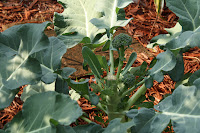Here’s a quiz for you. What bird is a petite 4 inches long, has a bright blue head, red belly and a lime green patch on its back? No, not from your 6 year old niece’s “Painting By Numbers” book. Answer: A Painted Bunting. Last week, just as it was beginning to get dark, a male Painted Bunting arrived to feed. When I saw all the bright colors I could not believe my eyes. It took my youngest son to track down the identity of this elusive and shy little bird on Wikipedia. Although the Painted Bunting is a native of North America and belongs to the Cardinal family, it is sadly near threatened due to loss of habitat. The Painted Bunting likes to eat millet, small seeds but will also nosh on spiders, caterpillars and other insects. Much to our delight, he comes back everyday now and, although I couldn’t get close enough to take a decent picture, you can go to the Wikipedia link to check out this gorgeous little fella! http://en.wikipedia.org/wiki/Painted_Bunting
I will hotly refute any suggestion that I am a cheapskate or anything, but I am mildly frugal, and I especially like getting two for one. “Two’fer” examples in my gardening world are quantified as getting two or three harvests from one plant (duh! not beans or tomatoes) or using something for a nifty gardening purpose when it was purchased as something else. Money saving examples that gardeners in S. Florida, currently growing lettuce and broccoli, can take advantage of are as follows. I planted leaf lettuce last November and all plants have matured. Can we eat 8 lettuce heads before they all bolt? Here is the solution. When making salad take leaves from around the outside of the lettuces and maybe a few inside leaves, use scissors here for sterile cuts. Leave 4 little biddy leaves at the heart of the lettuce and continue watering. Within a week you will notice that those 4 leaves are beginning to grow with another cluster of smaller leaves inside and you will have a 2nd harvest, and maybe even a 3rd!
Same deal with broccoli folks, when you have harvested the head don’t compost the whole plant yet. With just the stem left the broccoli will develop broccolets (a made up word) from the side stem which are tiny offerings for your stir fry. Wow! are we saving some money here or what!
 |
| broccolets |
Who needs peat pots? Not I. Try cardboard egg boxes with holes punched in the bottom filled with some nice cheap perlite and mix in some potting soil. Put the seeds in and water with a home made watering can. My light and oh so portable “watering can” is a sour cream container with lots of little nail holes...works like a charm. When the seeds develop into sprouts transfer to larger pots with a plastic spoon, or grandma’s best silver if you prefer. And talking about seeds and sowing, guess what is super handy to keep seeds dry and will also dispense one seed at a time.......a toothpick dispenser. Dixie brand works for me.
And finally, mad scientist that I am (not really), I recently became enamored with Quinoa - a delicious grain that the Inca civilization cultivated. The package instructions direct you to wash the grains really well - because apparently Quinoa has a coating substance called saponin, a bitter tasting compound that repels insects from eating the grain. Really? Bitter tasting insect repellant? So, when I washed the Quinoa grains I just happened to have a handy-dandy pot underneath to save the water soluble saponin. Then, because the white cabbage butterflies loitering in my garden have not escaped my beady eye, I sprinkled this water over my fledgling cabbages to see if the worms and caterpillars will be repelled. I will keep you posted on my progress fellow gardeners. Have a great weekend.



